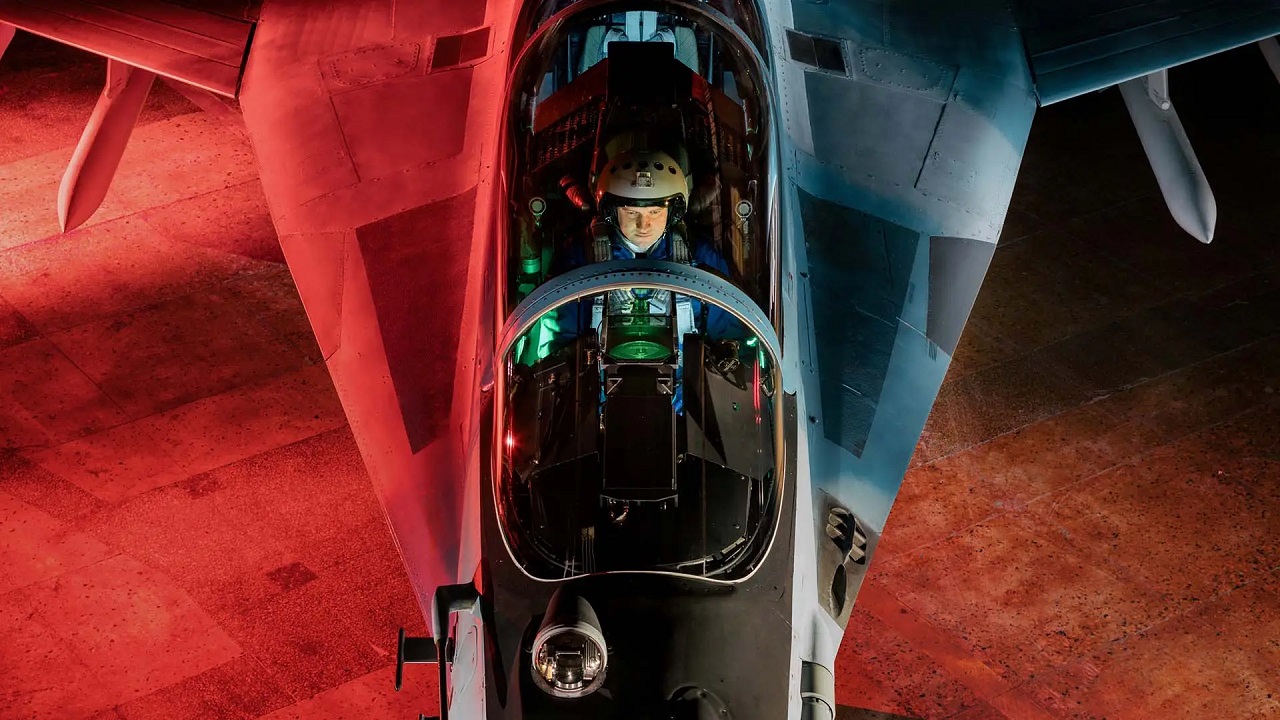The designation “fifth-generation fighter” was introduced largely as a marketing ploy by Lockheed Martin to tout the capabilities of its F-35 Lightning II. Another standard practice is for countries to hype up their older aircraft by adding a plus sign. The “4++ generation” epithet is widely used by Russia as a way to suggest its post-Cold War era fighters are something more.
A key example is the Sukhoi Su-35, an improved variant of the Su-27 (NATO reporting name “Flanker”). Russia also hypes another fighter for its advanced capabilities – the Mikoyan MiG-35 (NATO reporting name “Fulcrum-F”), an upgraded variant of the MiG-29K/KUB and MiG-29M/M2. This all-weather combat attack aircraft was developed by the Mikoyan design bureau, a subsidiary of the state-owned United Aircraft Corporation. Its purpose is to destroy enemy targets at day or night, and to strike ground and surface targets whether they are stationary or moving.
MiG-35 Marketing Ploy?
Without the proper context, it could be assumed that the Su-35 and MiG-35 share similar capabilities, and that either of them is on par with the American F-35.
Think again.
The “MiG-35” designation is simply another marketing ploy – and that medium-weight aircraft is still at heart little more than a fourth-generation multirole fighter. Its makers have justified the “4th++ generation” designation by pointing to capabilities including its vastly improved avionics and advanced weapons systems, as well as the new Phazatron Zhuk active phased array radar.
The array can reportedly track upward of 30 targets and engage six of them simultaneously – with the forward system able to detect incoming threats from at least 50 km away. The radar system is also resistant to electronic countermeasures and has a longer detection range than previous Russian-made radar platforms.
The aircraft is further reported to be fitted with two Klimov RD-33MK after-burning turbofan engines, which can push the aircraft to a maximum speed of Mach-2.25, and it has a combat range of about 620 miles. With nine hardpoints, the MiG-35 can carry a selection of missiles, rockets, and bombs, including Kh-31A anti-ship missiles with active radar seekers, Kh-31P anti-radiation missiles, Kh-29TE missiles, and KAB-500Kr TV-guided bombs. The aircraft is also armed with a 30mm cannon, but it carries just 150 rounds of ammunition.
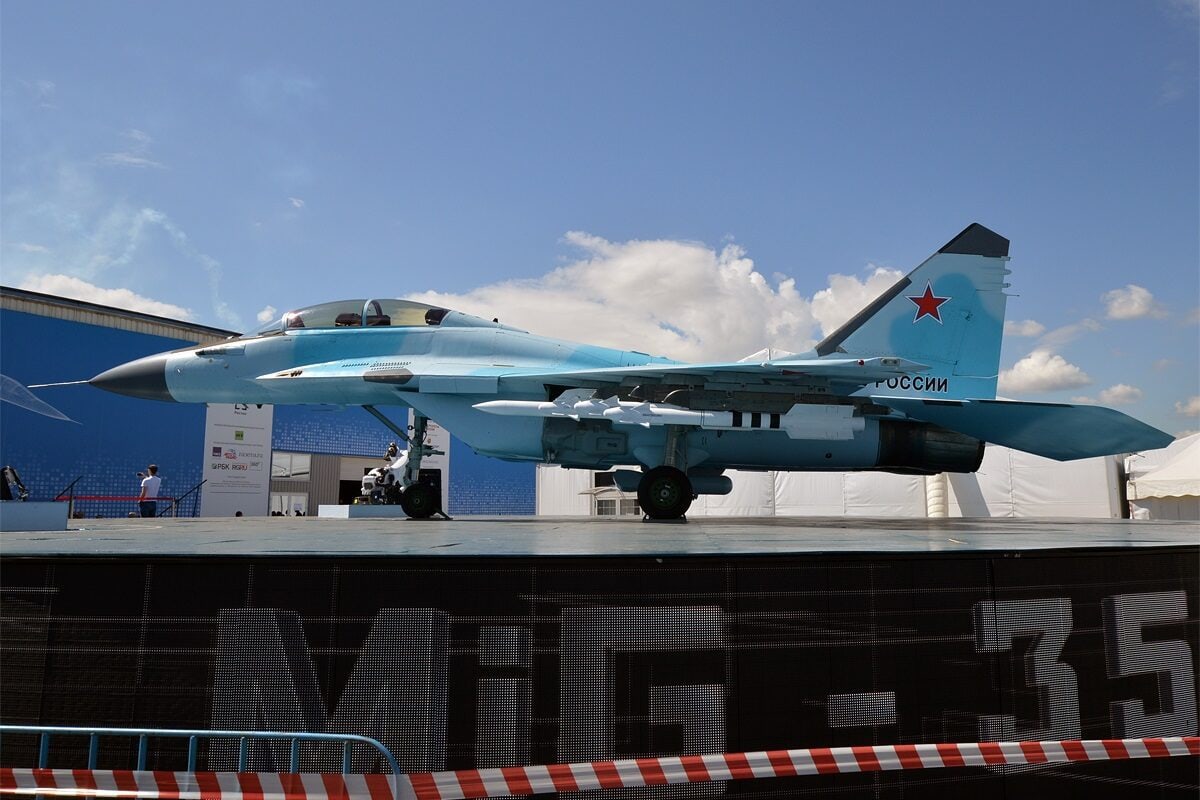
MiG-35UB pre-series at the MAKS 2017 International Aviation and Space Salon.
Stay Skeptical
This is all impressive on paper, but the MiG-35 is still built around a fourth-generation airframe that was developed in the late 1980s. Moscow has also continued to struggle to reach serial production with the aircraft. Since first being announced in 2007, the MiG-35’s development has been slow. It was only in 2013 that the Russian air force even announced it planned to order just 37 of the aircraft.
It is fitting that the MiG-29K, the aircraft on which the MiG-35 is based, first flew in 1988. That was the same year rappers Public Enemy released “Don’t Believe the Hype,” a song that could be the theme for this and so many other Russian aircraft.
MiG-35: A Story in Photos
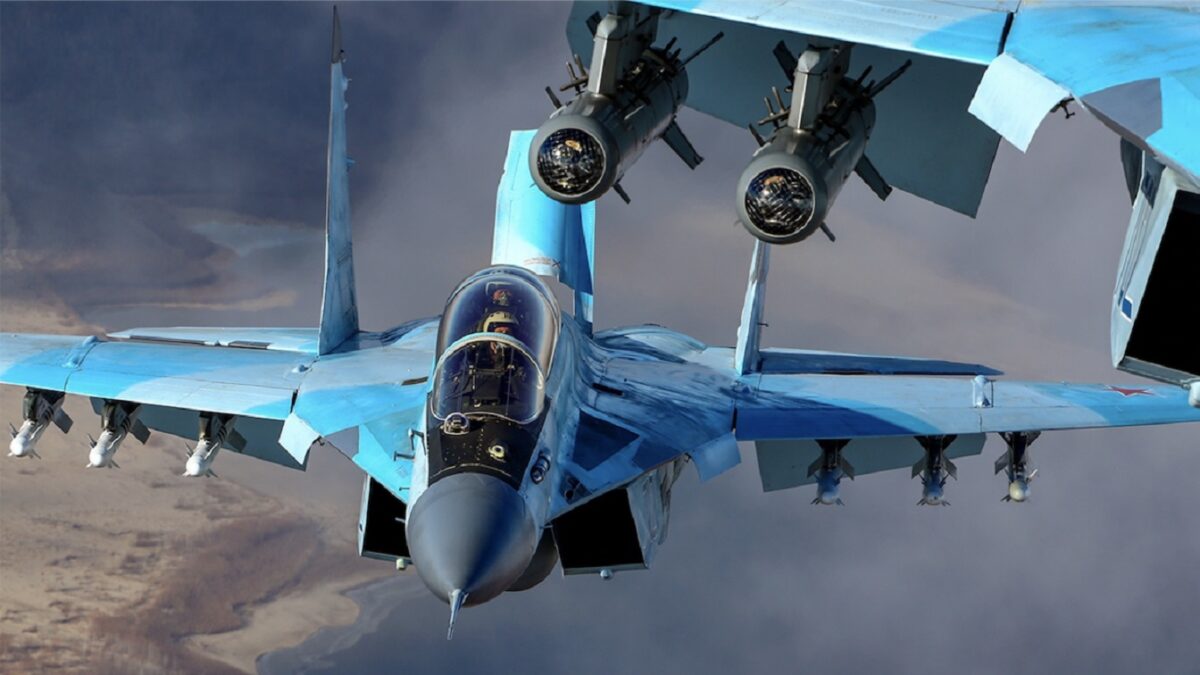
MiG-35. Image Credit: Creative Commons.
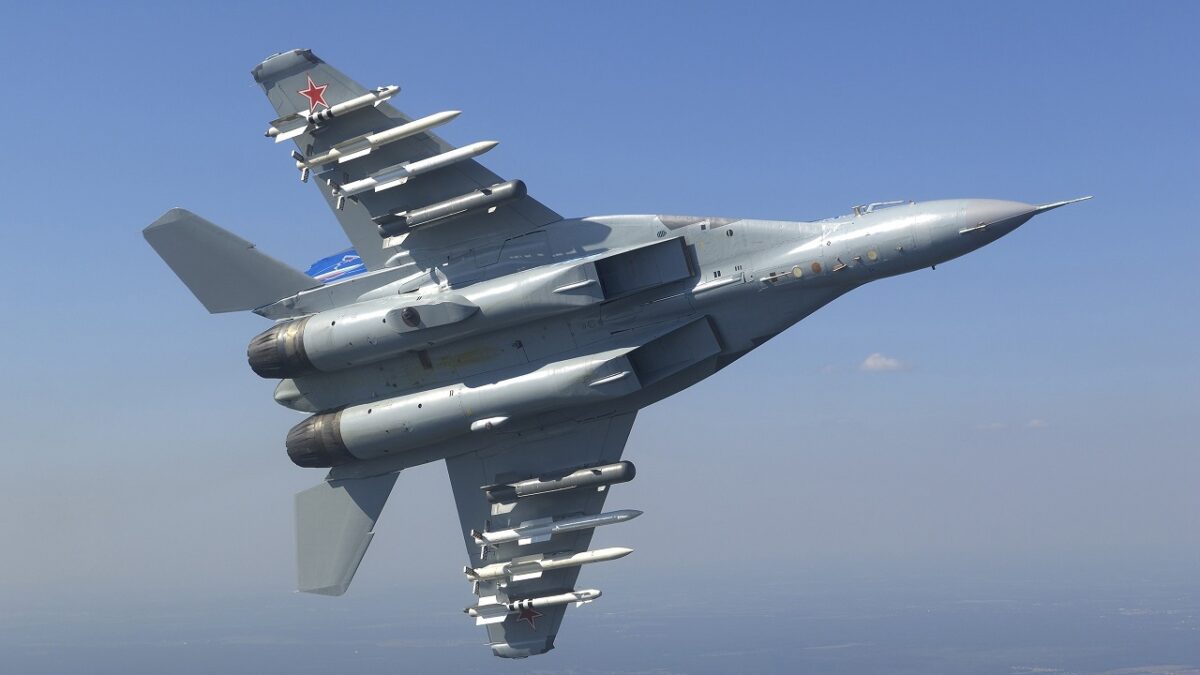
MiG-35 fighter. Image Credit: Creative Commons.
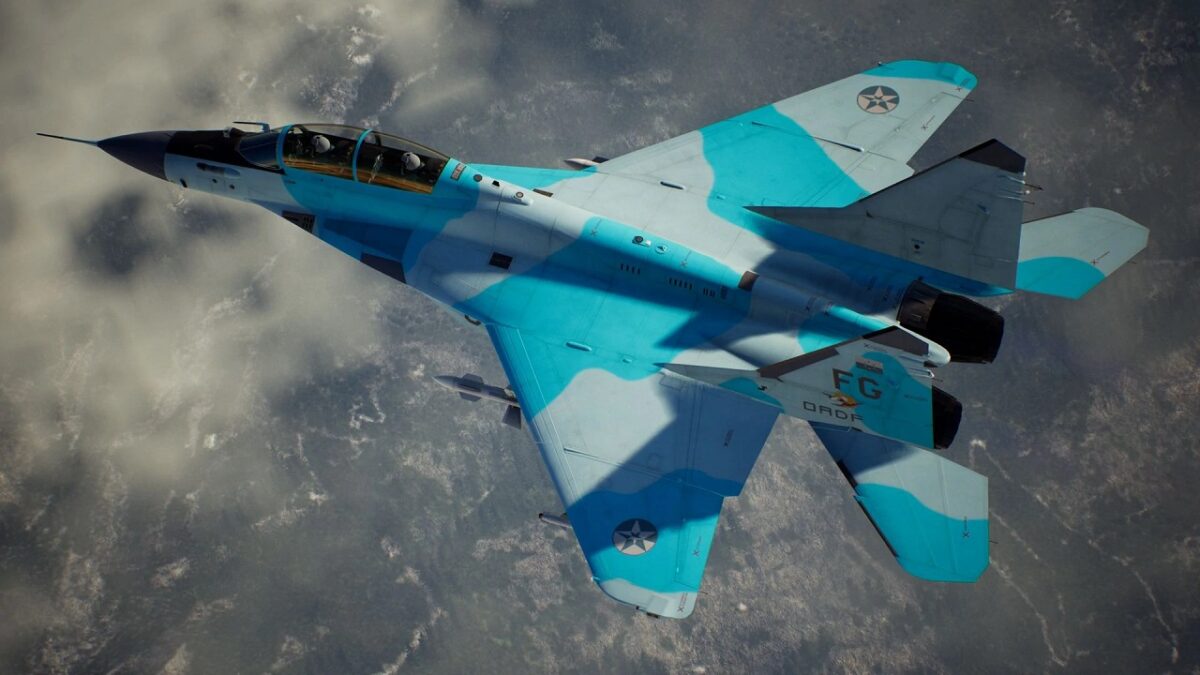
MiG-35. This is a computer generated image for a video game – Creative Commons.

MiG-35 fighter. Image Credit: UAC.
A Senior Editor for 1945, Peter Suciu is a Michigan-based writer who has contributed to more than four dozen magazines, newspapers, and websites with over 3,000 published pieces over a twenty-year career in journalism. He regularly writes about military hardware, firearms history, cybersecurity, and international affairs. Peter is also a Contributing Writer for Forbes. You can follow him on Twitter: @PeterSuciu.

